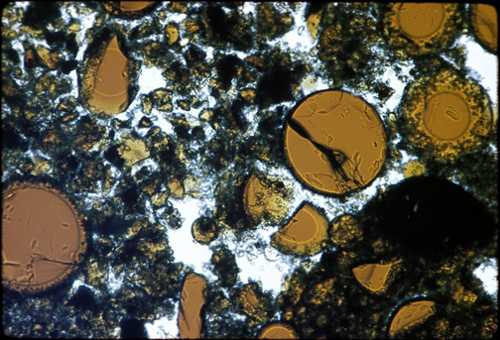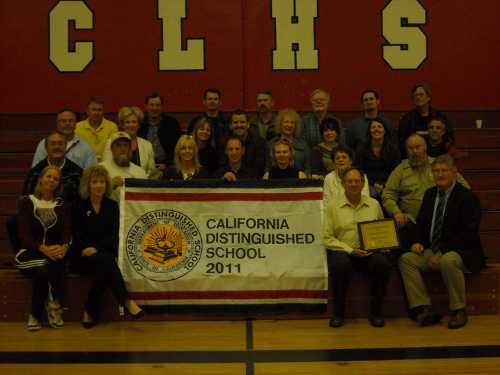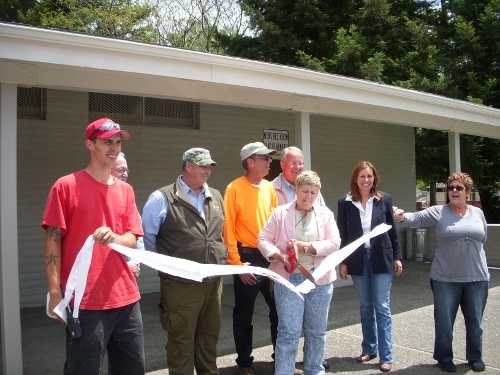- Elizabeth Larson
- Posted On
Thompson thwarted in attempt to amend bill to ensure ban on North Coast offshore drilling
Earlier this month Congressman Mike Thompson (D-St. Helena) tried to offer an amendment to H.R. 1231, “Reversing President Obama’s Offshore Moratorium Act,” which specifically opens the Southern California coast – estimated to contain six billion barrels of oil – the entire Atlantic coast, the Arctic Ocean and Alaska’s Bristol Bay for leasing.
A March statement, the House Natural Resources Committee – chaired by Congressman Doc Hastings (R-WA) – said the H.R. 1231 would help create jobs and generate $800 million in revenue over 10 years.
The committee statement accused President Barack Obama and his administration of moving the United States “backwards in terms of offshore energy production.”
“Failure to develop our offshore energy resources is costing American jobs, hurting our economy and denying American taxpayers revenue to help pay down the national debt,” the committee's statement said. “According to the American Energy Alliance, permanently lifting the offshore moratoria would result in 1.2 million U.S. jobs, $8 trillion in additional economic output, $2.2 trillion in total tax receipts, and $70 billion in additional wages each year.”
Despite the statements of several Republicans – including Hastings – that the bill wouldn't open up the North Coast to drilling because the region does not contain at least 2.5 billion barrels of oil or 7.5 trillion cubic feet of natural gas, Thompson nevertheless said he wanted to be sure that was the case.
“There's been efforts to open it up,” he told Lake County News.
As part of that “trust but verify” decision, Thompson said he introduced an amendment clarifying that the North Coast – Mendocino, Humboldt and Del Norte counties – may not be open for drilling under H.R. 1231.
He said Congressman Don Young of Alaska was managing the bill. Thompson staff asked to amend the bill and were told by Young that it would be allowed.
Later, the Natural Resources Committee staff refused to take the amendment, which caused Thompson to ask, “What are their real motives here?”
The Republican leadership opposed the amendment, he said, with Hastings – known for his attempts to strip back regulations on drilling across the board – reportedly asking his colleagues to oppose it, which they did.
On May 12 the bill went to the House floor.
Thompson, speaking on his amendment, urged support for it, explaining that drilling on the North Coast would be disastrous, and the legislation needed to be clear that the area wasn't included.
“The coastal area of my district is one of only four major upwelling regions in the world’s ocean,” he said.
An upwelling is where cold, nutrient-rich waters are brought from the ocean depths to the surface, he explained. Such areas promote seaweed and growth, supplying energy for some of the most productive ecosystems in the world, including many of the world’s fisheries, he said.
“North Coast ecosystems also sustain some of the largest salmon populations in the lower 49 states and provide essential habitat for Dungeness crab, rockfish, sole and urchin,” he said. “The 2006 and 2008 commercial fishery disasters that virtually eliminated salmon fishing in California were economically disastrous for my district, our states and our nation.”
The bill passed out of the House on May 12 without Thompson's amendment. Govtrack reported that the vote was 243 to 179, with nine members not voting.
In a statement released the same day, Hastings said the bill received a “bipartisan majority,” adding that H.R. 1231 “is just as much of a job creating bill as it is an energy creation bill.”
Thompson said he had concerns about the bill beyond just the possibility that it could impact the North Coast, noting that it expedites drilling leases “and ignores both science and oversight.
Following the Deepwater Horizon disaster in the Gulf of Mexico last year, Thompson said it's known what happens when oversight is stripped away. He said that incident will take decades to clean up.
Nevertheless, he said, there is a call to expedite drilling elsewhere, using what he called an “intellectually dishonest” argument that drilling will reduce rising gas prices. He said, at best, it may drop the price per gallon a few cents many years down the road.
Thompson cited a 2009 Energy Information Administration report that said opening up waters that are currently closed to drilling would only yield an extra 500,000 barrels of oil a day, which would reduce gas prices by no more than 3 cents a gallon – in 2030.
His office reported that if all the recoverable reserves of Northern California’s Outer Continental Shelf were tapped, they would provide enough oil to fuel the U.S. for only 100 days.
Thompson believes the Republican majority is setting the stage for future North Coast drilling in spite of its statements otherwise. If that took place, he said it would be “absolutely catastrophic.”
He said he's seeing regulations to protect natural resources being stripped back everywhere – not just with drilling but in water policy – with “gung ho” efforts to remove any barriers to allowing water to be sent south of the Bay Delta.
That puts everyone on the North Coast – from fish to timber to development – at risk, and would harm the Pacific Flyway, he said. There already has been a 97-percent loss of natural wetlands, which supports a $7 billion industry that includes fishing, duck hunting and bird watching.
Thompson said he's introduced separate standalone legislation which would permanently ban drilling on the North Coast.
However, with a Republican majority in place, he doubts it will be either taken up or passed.
Neither does he think that H.R. 1231 is going to make it past the U.S. Senate.
“They're not going to get their way on this,” he said.
Govtrack reported that the bill next goes to the Senate, but no action by that body has yet been taken.
E-mail Elizabeth Larson at This email address is being protected from spambots. You need JavaScript enabled to view it. . Follow Lake County News on Twitter at http://twitter.com/LakeCoNews , on Facebook at http://www.facebook.com/pages/Lake-County-News/143156775604?ref=mf , on Tumblr at http://lakeconews.tumblr.com/ and on YouTube at http://www.youtube.com/user/LakeCoNews .

 How to resolve AdBlock issue?
How to resolve AdBlock issue? 













